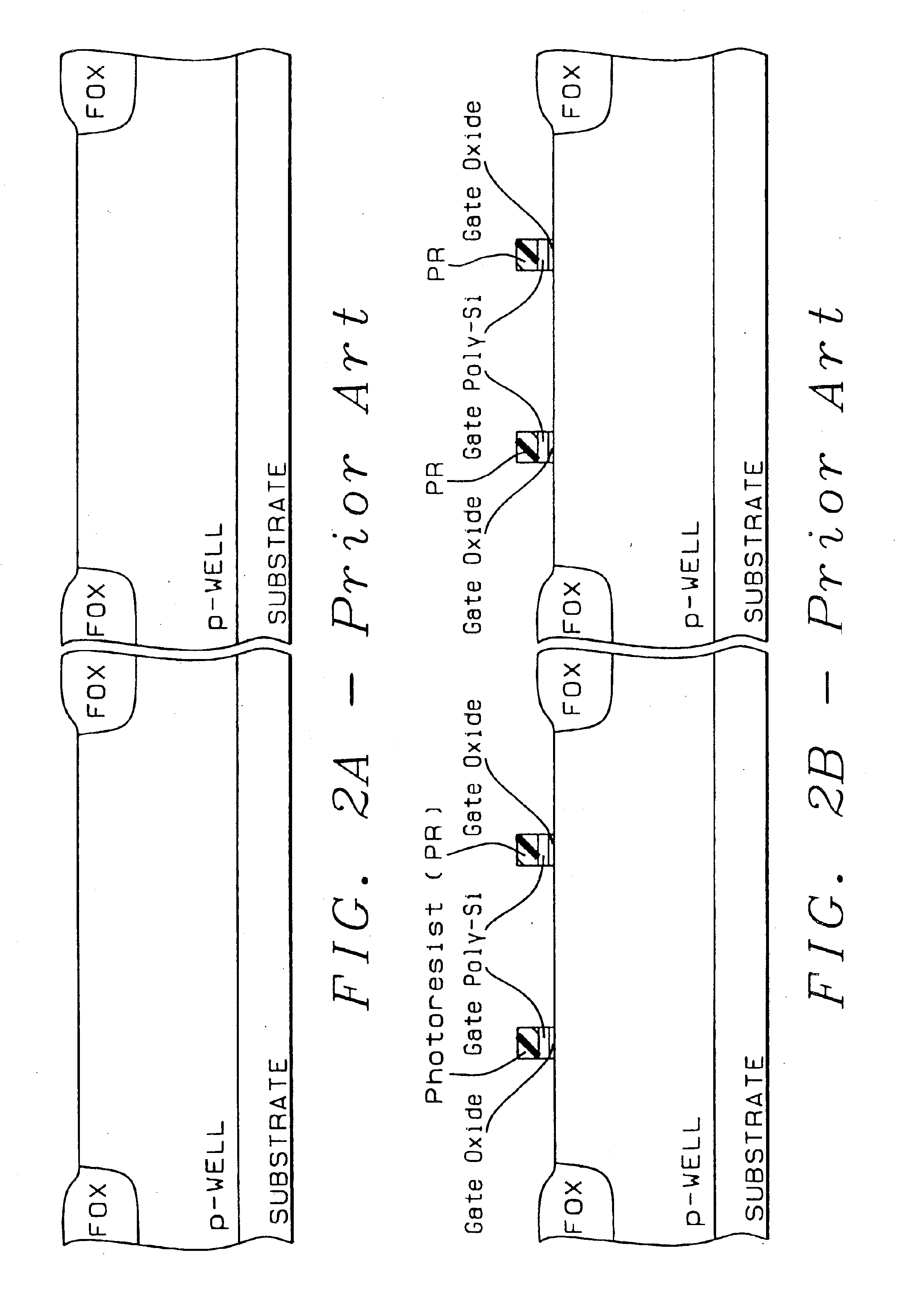ESD implantation in deep-submicron CMOS technology for high-voltage-tolerant applications
a technology of cmos and deep submicrons, applied in the field of semiconductor devices, can solve the problems of ldd region with a far shallower junction depth, unexpected leakage current from the output pad, and mos devices scaled down and thinner gate oxide become more vulnerable to esd stress
- Summary
- Abstract
- Description
- Claims
- Application Information
AI Technical Summary
Problems solved by technology
Method used
Image
Examples
Embodiment Construction
FIG. 5 is a process flow chart in accordance with this invention for high-voltage-tolerant I / O devices. FIGS. 6A-6H illustrate cross-sectional views of ESD protection NMOS devices and internal NMOS devices in accordance with this invention which show the results of the steps of FIG. 5.
FIG. 5 shows a flowchart of a process in accordance with this invention for forming a device 60 by the steps illustrated by FIGS. 6A-6H.
FIGS. 6A-6H are cross-sectional views of the FIG. 5 process flow in which the left-hand portions of FIGS. 6A-6H show the ESD protection devices and the right-hand portions of FIGS. 6A-6H show the internal devices.
In FIG. 6A, a substrate 61 is shown with Field Oxide (FOX) regions 63 formed on the surface of a P-well 62 which frame ESD protection device region ESD and Internal Device region ID. The process of FIG. 5 starts with device 60 formed on substrate 61 including P-well 62 as shown in FIG. 6A with an ESD-Protection-Device portion ESD on the left and an internal de...
PUM
 Login to View More
Login to View More Abstract
Description
Claims
Application Information
 Login to View More
Login to View More - R&D
- Intellectual Property
- Life Sciences
- Materials
- Tech Scout
- Unparalleled Data Quality
- Higher Quality Content
- 60% Fewer Hallucinations
Browse by: Latest US Patents, China's latest patents, Technical Efficacy Thesaurus, Application Domain, Technology Topic, Popular Technical Reports.
© 2025 PatSnap. All rights reserved.Legal|Privacy policy|Modern Slavery Act Transparency Statement|Sitemap|About US| Contact US: help@patsnap.com



